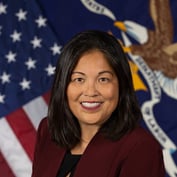A new report by Cerulli Associates shows that the vast majority of U.S. consumers are not getting the financial advice they may want and need because their portfolios are too small to attract the attention of financial advisors.
Cerulli suggests that digital advice could provide a solution for these consumers.
According to the report, 71% of American households — 89.6 million of them — have less than $100,000 in investable assets, and a mere 8% of advisors target this cohort.
The typical consumer will find few advisors willing to accept them as a client, the report said. The average IRA rollover balance is $119,300, while the average balance of a rollover IRA captured by advisors is $136,800.
Both of these asset levels barely open consumers up to more advisors. Just 29% of advisors target investors with assets in the $100,000 to $500,000 range.
“The mass market and the lower end of the middle market are underserved by financial advisors,” Cerulli associate director Tom O’Shea said in a statement.
“It is not that advisors are unwilling to help small investors,” O’Shea said. “Rather, they cannot figure out how to make money when working with them, leaving investors to go it alone or rely on guidance provided by direct-to-consumer firms.”
The report said financial industry lobbyists believe that the Department of Labor’s new conflict of interest rule will make it difficult to sell mutual funds that charge sales loads to a retirement account holder.
Absent income from these commissions, brokers will abandon the small investor, they think.
A Robo Fix
Executives at managed account sponsors and third-party vendors, such as Envestnet and Jemstep, appear to believe digital advisors can fill the void left by advisors who are unwilling to take on smaller investors.
The report said they rate the ability “to service less profitable and/or smaller accounts” as the top motivation for incorporating a digital advice offering into their platform — along with engaging millennials and spending more time with clients.
They are also motivated to create a digital advice offering in order to respond to upcoming DOL regulations by offering a low-minimum, inexpensive managed account product.








 June 20, 2016 at 12:22 PM
June 20, 2016 at 12:22 PM










